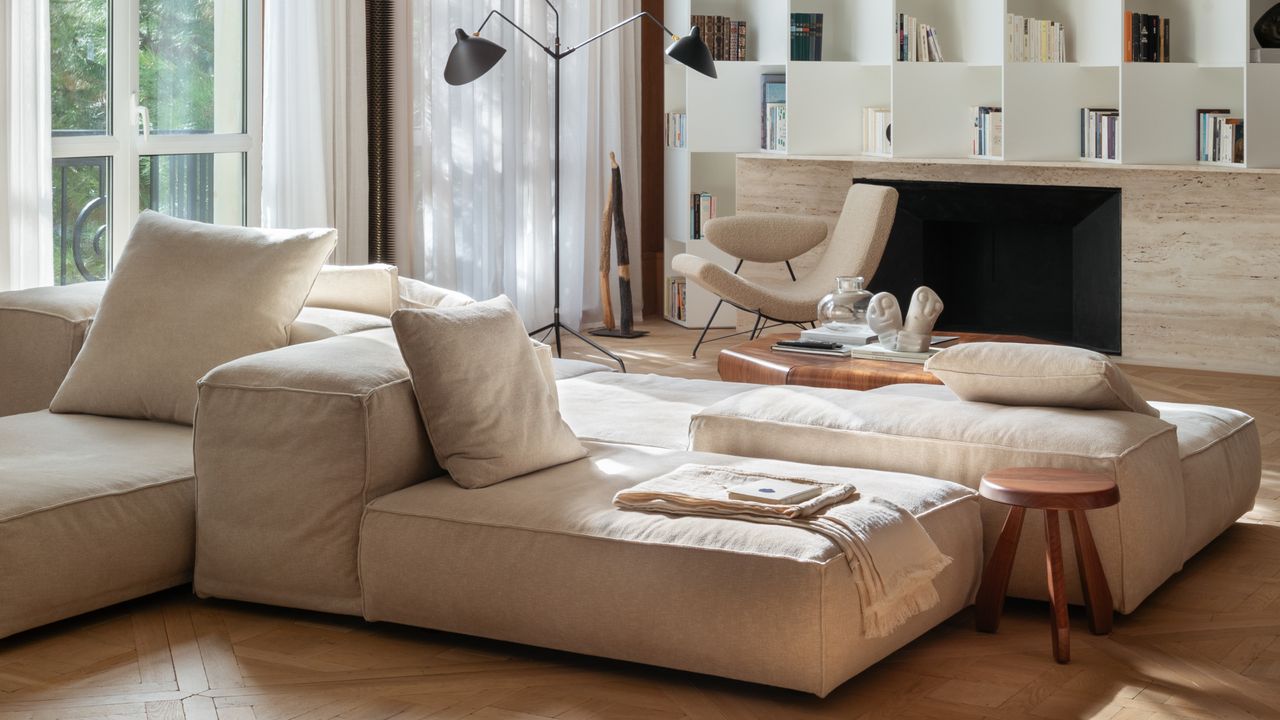
Laying out your living room typically follows a standard formula. A sofa against the main wall, a coffee table in the center, and — if you're blessed with the space — a couple of accent chairs to fill out the sides of the room. It's a standardized setup for a reason (it works), but what if we could have a bit more fun with it?
And by fun, I mean a living room layout that feels experimental, exciting, and a little bit reminiscent of 70s conversation pits. Enter the 'centralized seating method'. It's where living room seating is arranged together in the center of the room, creating a layered lounging moment that prioritizes connection and oozes with main-character energy.
Ditching the traditional layout may sound chaotic at first, but Livingetc's spatial design expert, Delphine Bouvet, says, "I absolutely love it when I get the opportunity to take seating furniture off the walls. It moves traffic areas away from the center of the room, giving space for the furniture to breathe and be seen from all angles." Intrigued? Let's break the idea down a bit further.
A Case for Centralized Living Room Seating
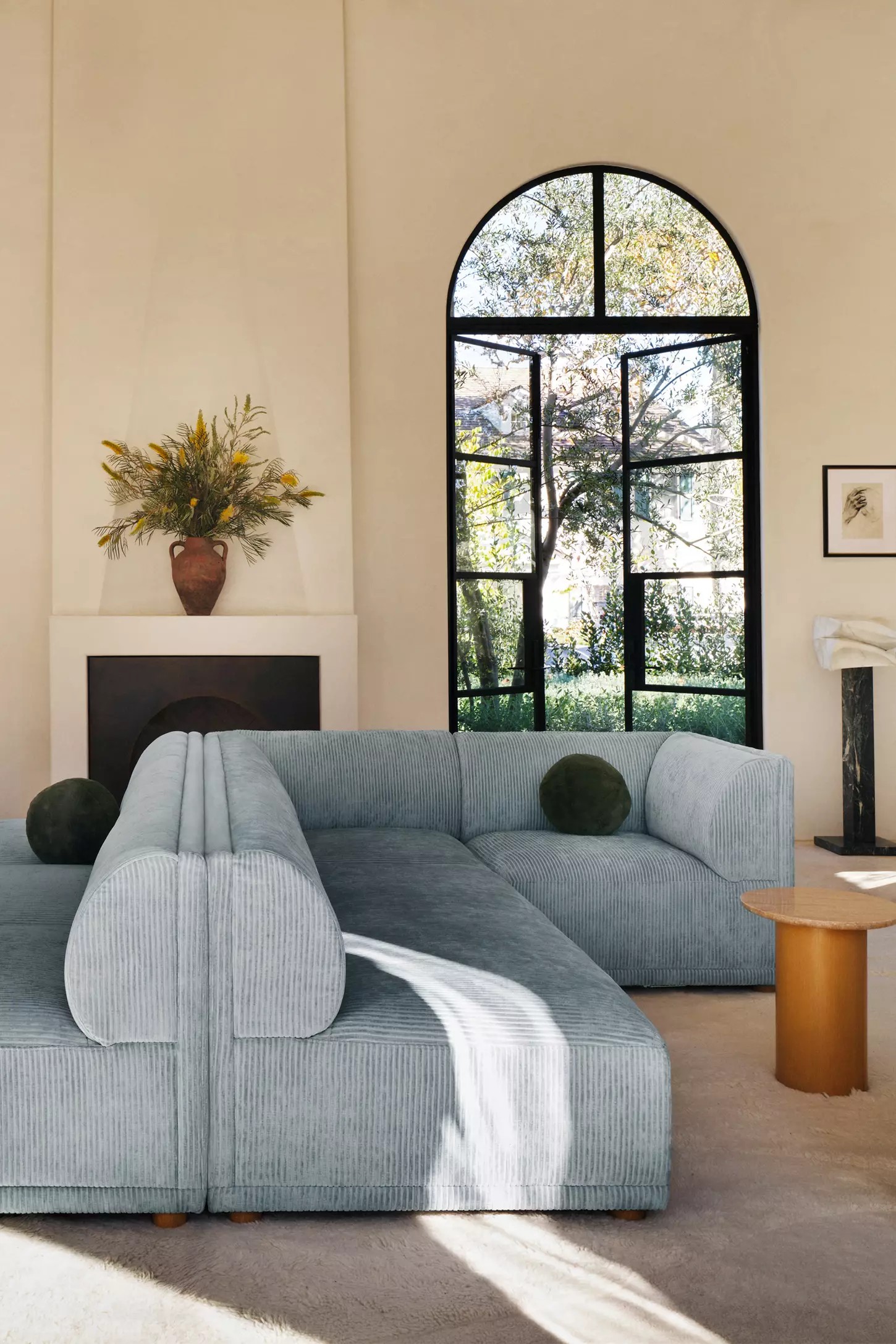
So, why should you be considering a seating-centered style? Quite frankly, most modern living room ideas are predictable in terms of layout. Don't get me wrong, it works (there's a reason we rely on them), but often the best design comes when you start to think outside the box.
Floating your living room furniture off the walls allows you to make the center of your room the immediate focal point. For those blessed with large or open-concept spaces, a centralized seating area instantly rectifies any issue with dead space in a living room as well.
No more shouting across the room when making conversation, grouping seating in the center of the room alleviates the struggle of either adding more coffee tables or a second seating area, and instead creates a social cluster perfect for movie nights and entertaining alike.
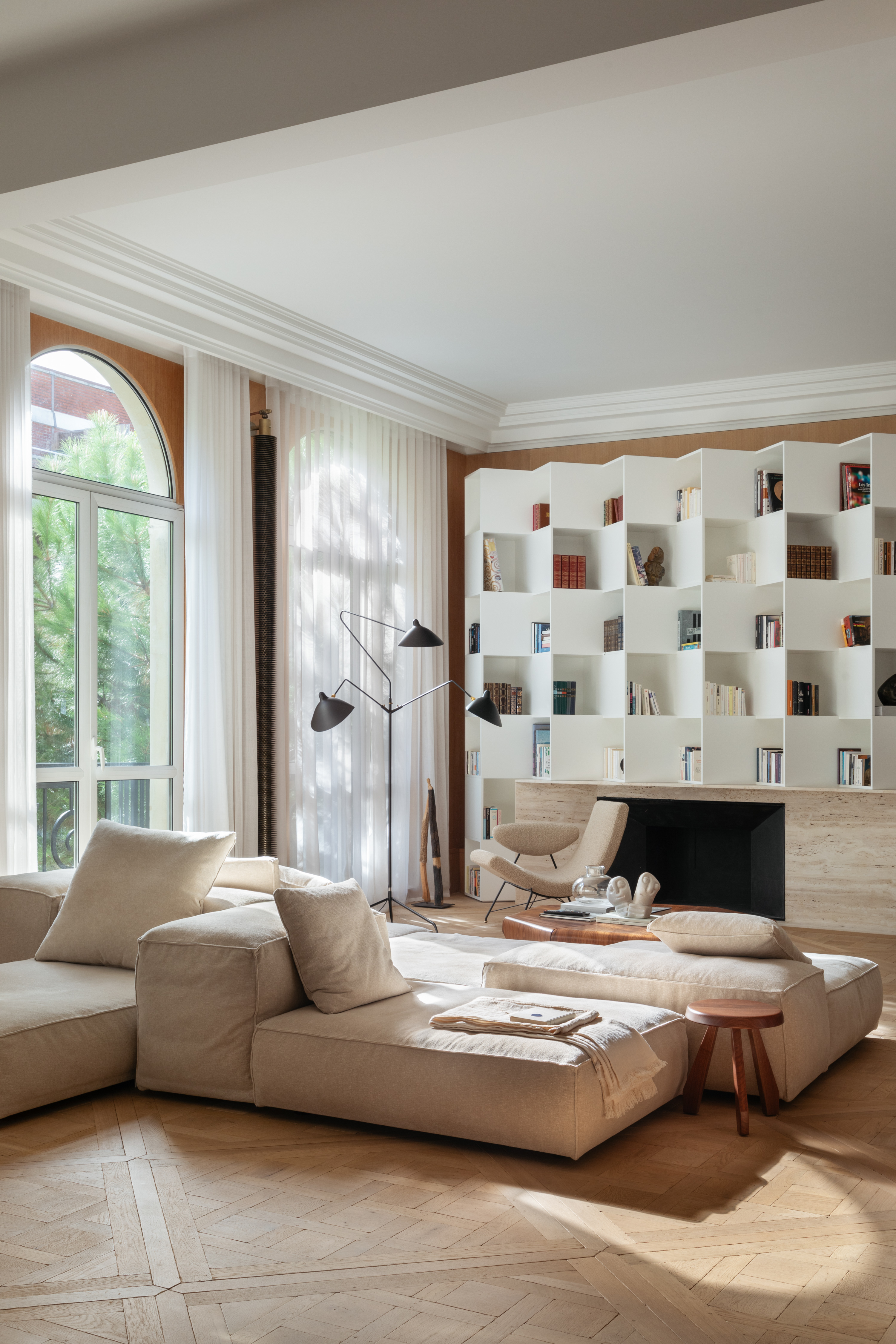
However, going against the typical flow doesn't come without a few warnings. The main one being that this style is typically left for larger spaces.
"The layout of centralized seating tends to be driven by the architectural features of the space, and the style doesn't suit every type of sofa or seating," says Delphine.
Plus, moving your Chesterfield sofa into the center of the room isn't going to end in that same retro-chic aesthetic. "Stick with low back seating in this combination rather than wingback armchairs, which can close the space," says Delphine.
Centralized seating also means the sofas and chairs need to be carefully chosen for their appearance from all angles. Generally, higher-end furniture is typically required to pull off this look successfully.
If you've only got a small living room or budget to work with, centralized seating isn't completely off the cards. It just means you need to get creative with the furniture you choose and how you arrange it. Instead of a custom pit sofa, a few ottomans arranged together would have a similar effect.
Shop Pieces to Create the Look
How to Style A Centralized Seating Layout
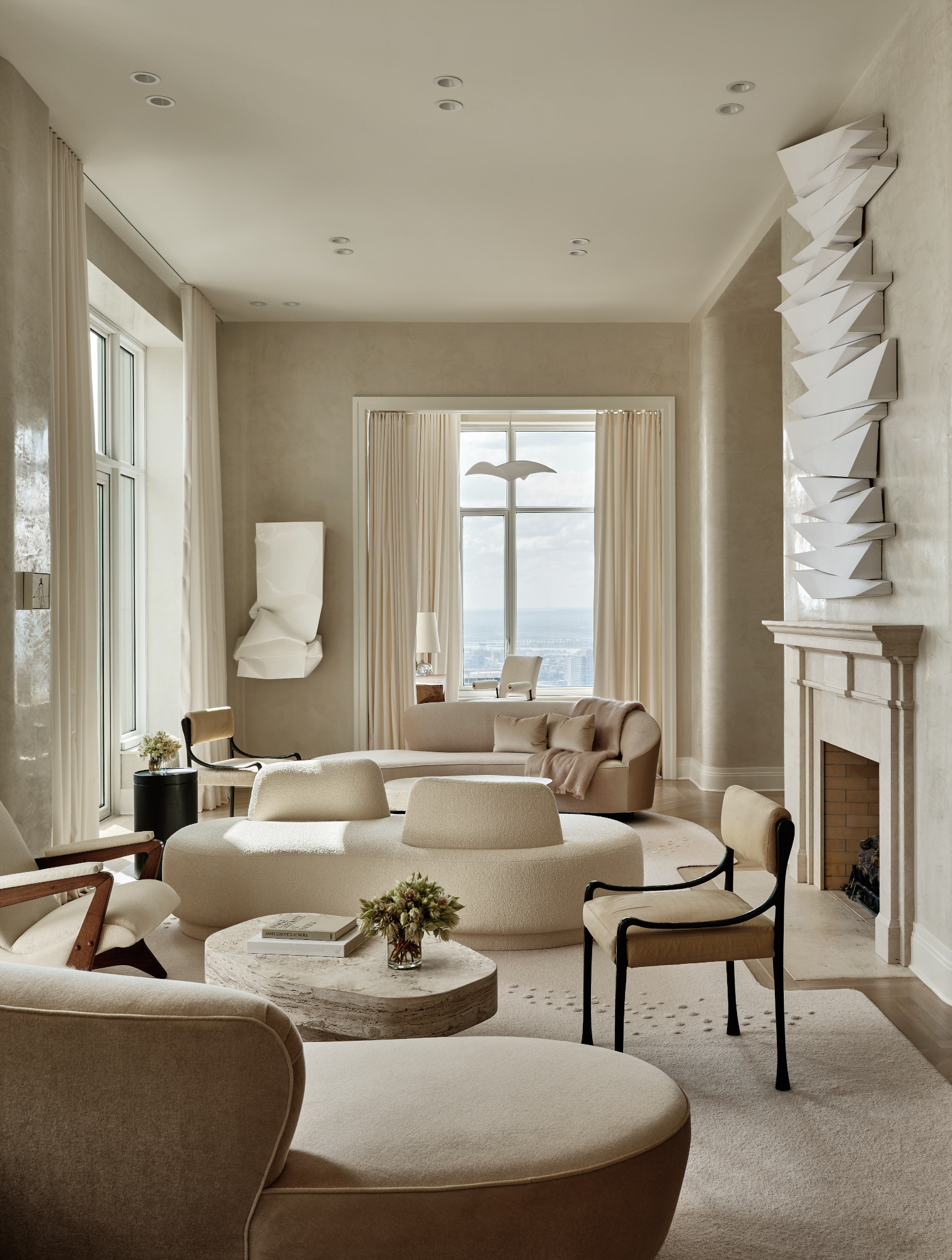
Buying a modular sectional sofa, placing it smack in the center of the room, and calling it a day won't do. Perfecting this layout is all in how you style it, of course.
Let's start with the basic furniture placement rules. "As a general guide, I allow a minimum of 1.2m for traffic around the furniture and to provide the right feeling of airiness," says Delphine. Less than that, and it can look like the space is suffocating and the layout is trying to work too hard.
"It's also important to pay attention to access," Delphine adds. "For example, the seating must be easily accessible from the doorway and feel welcoming." No one wants to have to squeeze in through narrow gaps in between furniture.
"Where there is a view or another obvious focal point in the room (for example, a period fireplace), it is best to opt for a layout in an L or U-shape rather than arrange the seating in a full square or circle," says Delphine.
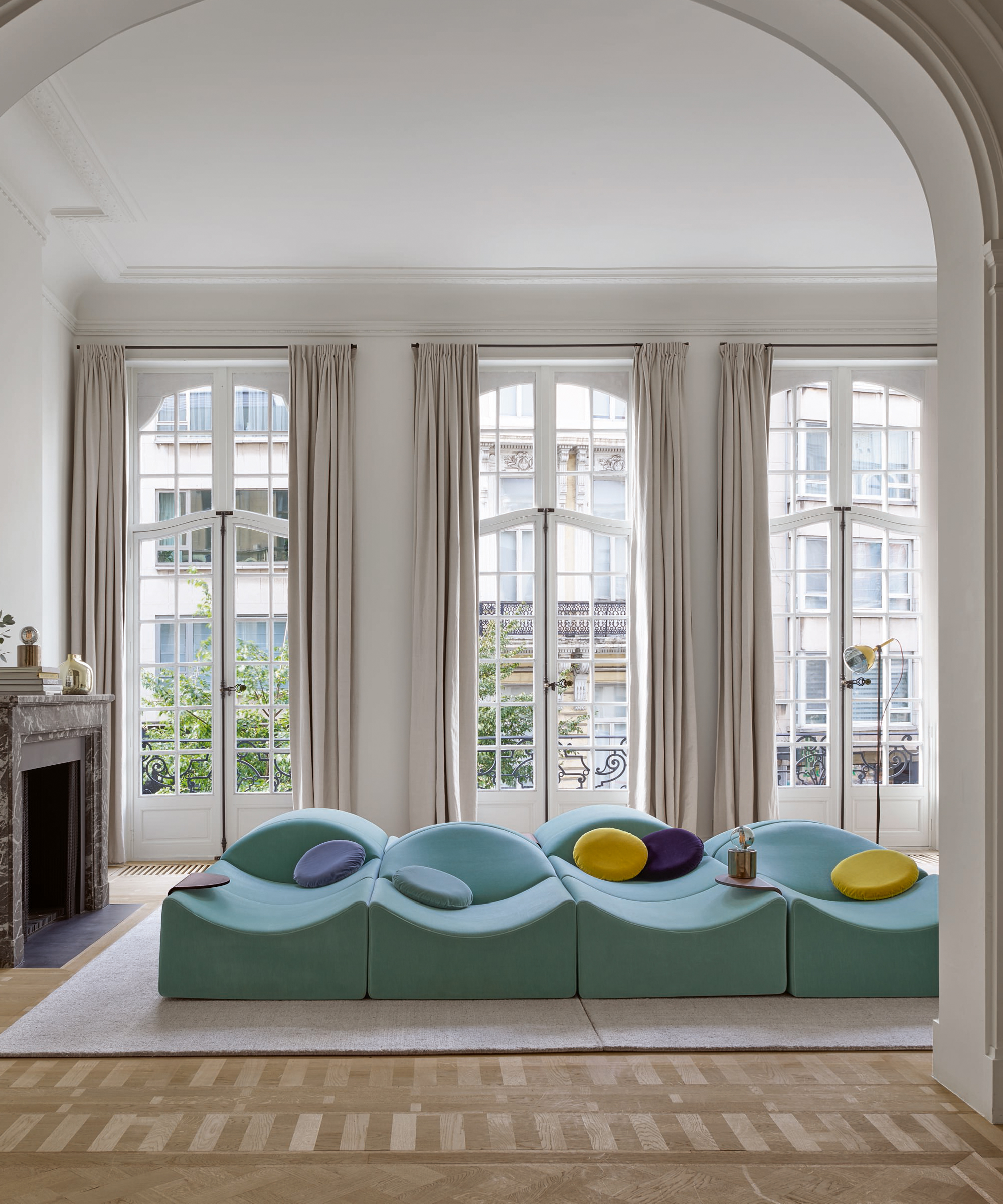
While a DIY conversation pit may instantly come to mind, "I personally don't think there's a need to resort to sunken areas to make this style work," says Delphine. The main objective is to arrange furniture so that guests can face each other in a way that makes sense.
For this, modular sofas are one of the best options — especially for minimalist interiors, as they offer consistency and balance, as well as the flexibility to re-arrange the layout when needed. However, "modular sofas tend to have a big footprint, so it's important to consider scale to avoid overcrowding," says Delphine.
Once your seating is finalized, you can add the extra decor and furniture items. As with any cozy living room seating, you'll need a place to rest a cup of tea, a book, or a phone. "Side tables, placed within reach of the sofas, usually in the corners of the layout, are essential. Glass can be used to keep the feeling of space," says Delphine.
You may be wondering where the rest of your furniture will live. In a centralized seating layout, any cabinet, console table, or spare chairs will find their natural place against the walls of the room. "This is also where lamps and plants can be positioned," adds Delphine.
Pro tip: "It's also worth considering bringing some floor sockets towards the center of the room, for plugging in table lamps and charging phones, for example, and avoid having cable trailing across the floor," says Delphine.
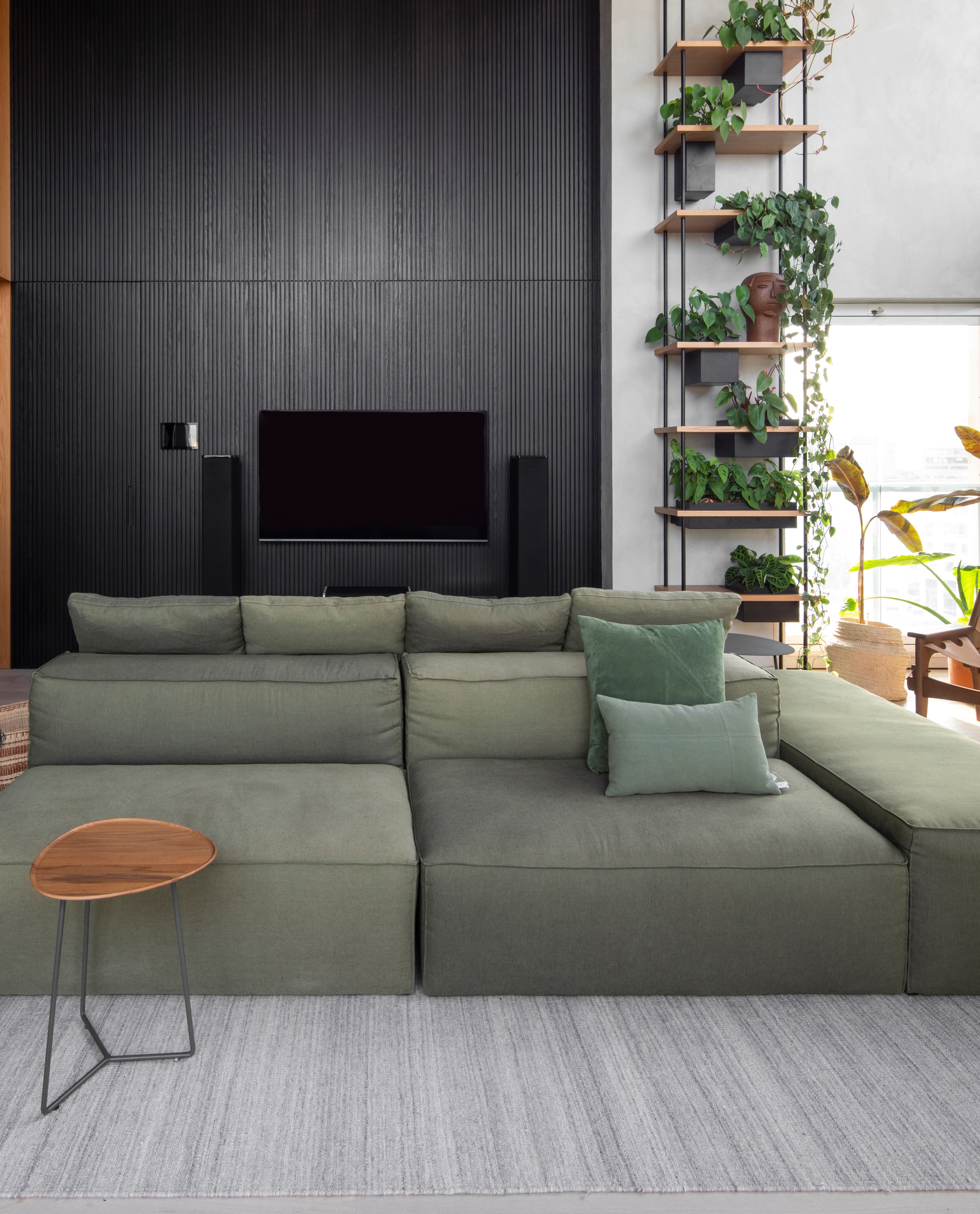
Consider this your sign to break away from traditional living room layouts and try something with a bit more personality. To help, Livingetc has asked a spatial planner for their best living room layout tips.







